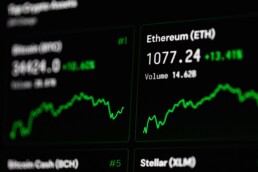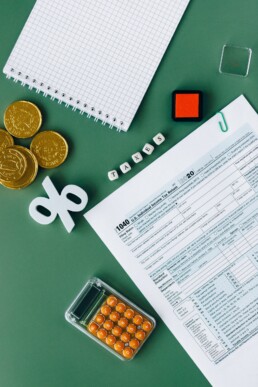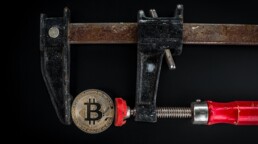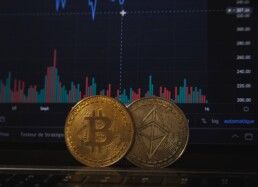Exchanges and Order
Exchanges are the places where sellers and buyers meet together. This online sites are dedicated to the trading of various cryptocurrencies.
There are various types of exchanges, from the largest and most established with users from all over the world to the smallest ones that have a predominantly regional audience, as it happens in Japan and Korea.
The main features that interest us in an exchange are which coins are traded, the volumes and costs of the exchange and the safety of the sites.
Security as you well know is the fundamental factor of this world, and it weighs on your shoulders.
Exchanges work just like the stock exchange and manage your money. There is an order and sales book, you will have your own personal wallet but owned by the exchange. With some of these wallets you can even make loans to other users and get paid.
Now, there is no 100 percent secure exchange and these entities are in the hands of companies that obviously have profit as their reason for existence. Exchanges can be attacked by hackers or they can scam users, blocking funds and running away with money. For this reason you will have to leave as few coin or currency as possible on the exchange.
The largest exchanges are structured to resist to attacks and attempted robberies, but the provision is never too much. Each exchange takes care to put you in a position to protect your account, so don't be lazy and take the necessary actions to protect yourself
Moving on to coins, here we have another difference. In almost all exchanges bitcoin is traded but some small coins, with very low volumes and illiquid, are traded only on one or two exchanges in the world. This forces us, if we want to betray them, to rely on these actors who are unknown to most. In this case we will have to read the rules of these exchanges because they may not allow the exit of funds below or above a certain value, or forcing us to go through the kyc procedures and this may take a long time to be resolved.
The volumes of an exchange are an important signal, meaning that that data coin on that given market is very or little sold and in demand. Many volumes equate to many buyers and sellers, therefore a market rich in money that is defined as liquid. Small exchanges with low volumes are therefore illiquid.
Each exchange has usage costs, check them before deciding on which exchange to operate more often.
Also remember that although bitcoins are all the same, on different exchanges they are sold at different prices, giving rise to arbitrage phenomena.
When you go to trade on exchanges, you will have different types of orders to buy or sell. Let's see some of them.
Let's start with the simpler than the market order or market order. In this specific order, the purchase takes place at the sale price of the lowest asset and the order is not stopped until the requested quantity is reached.
Let's take an example. I purchase 20 ethereum with a market order. At that moment on the book, the first lots on sale at the lowest price will be 10 ethereum at $ 200 and another 20 at $ 210.
With this order I will buy 10 ethereums for $ 200 and another 10 ethereums for $ 210. With this order, the price does not matter, but the quantity indicated.
In the case of a sales order of this type, the behavior is the same.
Another kind of order is the limited order. In this case, when we go to create the purchase order, we enter the quantity and the decided price. In this case we can put a price slightly below that of the moment or much lower, it all depends on how we see the situation on the market. This type of order could be either unfulfilled or partially filled.
Again using the example above, if we placed an order for 20 ethereum at $ 200, with a current price of $ 210, we would have to wait for a descent to ensure that the order is executed. It could happen that only 5 ethereums on the market sell for $ 200, so our order would be partial.
Also in this case when the behavior of the order in the event of a sale is the same. Price and quantity will be fixed and may not be reached.
A more complicated type of order is the stop loss order. This kind of order incorporates a sales strategy that wants to cut losses, a stop loss in fact. When the trend is uncertain you can use this order to protect yourself.
In case we still have an order like this for 10 ethereum at $ 200, with a stop loss at $ 190. If our long view is right, from our purchase at $ 200 ethereum it will go up in price and at the right time we will take profit. However, if we made a mistake and ethereum starts a negative trend, our order will automatically sell the position at 190 dollars, saving our account.
Viewed from the point of sale, this type of order can be changed with a higher price which turns into a take profit. If ethereum begins a slight positive trend we will be able to move the stop loss in equal to $ 200 or if the rise is more pronounced the figure could be even $ 210 and beyond. In this case we would continue to have a position within an uptrend that would be sold for a gain in the event of a reversal of the trend.
Bitcoin Lightning Network
Lightning Network is one of the solutions for one of the problems of bitcoin.
Lightning Network is a system created on top of the Bitcoin blockchain, with specific rules, to have fast and fee-free transactions.
We all know Bitcoin is cool but it's not perfect. Bitcoin has limitations such as the speed and cost of transactions.
In a particularly dense period of transactions, not high enough fees and blocks every 10 minutes, can make your purchase or move from one wallet to another really slow and expensive.
Lightining network should solve all these problems. The concept of this system has been developed since 2015 and we have to imagine that it works as if it were a layer cake.
On layer 1 we have Bitcoin with the blockchain while on layer 2 we have the lightning network system.
This feature is created specifically for micropayments, so that all micro transactions are not written on the bitcoin blockchain. At least not immediately.
The payment channels are created so if I want to send funds to a friend of mine or to a shopkeeper we can open a payment channel between the two of us, with our payments not involving the main blockchain. the transaction will take place at the speed with which the two wallets are able to communicate with each other.
When the transactions between the two wallets are complete, a main transaction will be created and written to the main Blockchain.
Now, if we thought of a series of regular, small-scale transactions, such as coffee at the bar every morning, each transaction sent to the main bitcoin blockchain would cost us more in lost time and fees than the transaction itself. Does it make sense to spend 10 dollars of coffee and 20 on commissions?
NO
Now let's imagine opening a payment channel for my entire CY Mood team with my favorite bartender. Upon opening the payment channel, both parties deposit a certain amount of money to guarantee the total transactions. If I know my team drinks 100 coffees a week I will deposit an equal or greater amount.
On the main Bitcoin BlockChain there will be only 2 transactions, namely the first transaction to open the payment channel and deposit the coin and a second to "close" or complete the payment
Now if we go back to our second layer, thousands millions of transactions can take place within the payment channel without these being written to the main blockchain. My team will be able to drink thousands of coffees and every time they buy, they will write an X BTC transaction to the barista
Weekly, monthly or every time my barista friend wants to cash out the coffee bitcoins, he will decide to write the transaction on the main BlockChain.
The system works best for small repeating transactions, we can think of our baker or the barber. There is obviously a system against scams, for those who want to close the payment channel in advance and not pay anything. In this case, the total of the initial deposit would be sent to the scammer. This greatly discourages scams.
Another interesting ability of the Lightning network is the ability to make payments to people with whom we do not have an open channel, but using other people's channels.
Being exposed in crypto consciously and knowing the dangers.
Why investing in cryptocurrencies? Why starting to study a whole new environment with a huge initial difficulty? Why endanger that part of our assets that we have decided to allocate in cryptocurrencies?
Because yes.
We start from the idea that the world of investments as a whole is huge, and that Blockchain is currently the most recent technology and with the greatest growth push on the planet. Investing in blockchain projects is within everyone's reach, so even less capable investors with little experience or just beginners can invest. Investors of this type are the ones who will make the biggest mistakes so they need to understand the various projects and decide if they are worth our money.
If you remember the dotcom bubble, you could have invested in amazon or google or other realities of the early internet era ... But we only remember those who survived and we forgot all those realities that had stratospheric growths in a few weeks, and then see your stock value crash to the downside and disappear from the market. But only from the market, not from the sad and shocked minds of their investors ...
Let's forget for a moment Bitcoin and Ethereum which are now the two champions of the crypto world, the universe of Blockchain projects is huge and varied.
It should be immediately understood that there are many projects that are or have turned out to be exclusively scams or clones of other more noble and serious projects, which with scammy name and various tricks have simply tried to drain funds from inattentive and inexperienced investors.
Currently over 90 percent of blockchain projects launched and funded have failed, most without writing a single line of code. Aware of this, and also aware of the fact that the Blockchain is the future and it is time to be inside it, as investors we must ask ourselves some simple and basic questions to understand where to put our funds.
Let's start with the first doubt to be eliminated, if the project we are evaluating creates a product or service that solves a real problem and if this is in line with Blockchain technology. Not all projects showed off as crypto friendly are suitable for the Blockchain. In case it is really suitable, and perhaps thanks to the blockchain it solves an unsolvable problem, well we have taken a big step forward. Those who do not respect this rule can be eliminated in a long-term investment perspective.
After that we will have to understand if the evaluated product really exists or is still under development or worse, it is only on paper and not even explained in a perfectly understandable way. In fact, a product under development takes months if not years to be launched on the market, extending the time for the return of the investment and therefore enormously increasing the risks for the investor.
After the product, the team should be checked. It is clear that the team must reflect experience in the sector to which the project belongs and the individual members must be experienced and competent, with a good curriculum. The team will then have to try to create partnerships with various companies already on the market. Experience, partnership and reputation are excellent indicators.
Another aspect to check is the type of token created to finance the project and offered to the public. There are utility tokens that offer a service linked to the project and whose value changes according to company and market trends. Otherwise, security tokens can be offered, which are backed by real company assets. These tokens are regulated and, in addition to offering an extra guarantee on the project, they carry rights on assets owned by the company.
Another point to check for the investor is the control of who issues the token, whether through an exchange or directly by the company in charge of the project. In the case of little-known exchanges with an unclear past, here is an alarm bell.
And this point makes us shift our attention to the dangers of investing in cryptocurrencies. Danger seen as the possibility of losing all our accumulated value.
First of all we need to define and differentiate the types of risks we run by investing in crypto.
We have two main type of risk, which are technical risk and financial risk.
When we talk about technical risk, we mean any problems we may have with wallets, exchanges and other technological issues.
The wallet is your property and it is your responsibility to manage it in the best possible way. One of the things that you cannot predict, however, is a possible bug that cause to hack the wallet and make you lose your funds. For this reason, the best choice to always make is to look for and use only the most successful wallets created by companies that invest a lot in security for their products. This choice is yours and it is your responsibility.
The same goes for the choice of the exchange on which to operate. An exchange can be attacked and its wallets can be hit and looted. But a large exchange has the funds and a strong need to protect itself, so it will always be state of the art in protecting its business and consequently its users. On the other hand, small exchanges do not always have these capabilities and are much more risky. The risk you take, however, can be rewarded since small exchanges often have coins that are not present on the larger ones and the movements can be more violent and faster, making you gain or lose more.
Leaving your coins on an exchange is a big risk. Remember that the coin that is on your wallet on the exchange is in the wallet of an exchange and not on your proprietary wallet. If something should happen to the exchange, you are almost certain that you have lost your parked coins waiting to be traded. In my experience it is better to spend something on movements from and outside your wallet. You run the same risk when you borrow your coins on an exchange that gives you this option. In this case, however, the risk is greater since your coins will be blocked for the entire time of the loan, not allowing you to quickly exit the exchange for whatever reason you want. It should also be considered that exchanges do not always allow immediate exits since the general timing is between 12 and 24 hours.
Scams are a full-blown reality of this world, we have made an article with the list of the most famous so we can teach you how to defend yourself. Learn more about Scam here.
Another problem you may find is the technological protection of the coins. Coins like Bitcoin and ethereum are difficult to attack, the development teams are very large and made up of capable programmers with very large budgets. On the contrary, coins just put on the market and therefore small and with few developers could have bugs that undermine their intrinsic safety. Choosing the coin to invest in is your responsibility, you take a risk in any case but it is a risk that you can manage.
Therefore the risk is reduced by using high quality wallets, exchanges of proven trust and coins among the most liquid. If you use the right things in the right way you have lowered the problematic risk.
Now let's face the financial risk.
The major problem encountered in the crypto market is the extreme volatility of prices, given by a combination of low market liquidity, thin books and a strong presence of whales that can move the market. However, this volatility is the key to making money. If we position ourselves in the right trend, our coin will obviously have a growth that is impossible on conventional markets.
But be careful, there are no guarantees regarding the growth of the price of a coin. It is not acceptable to buy something at random and abandon it, and then hope that in the following months or years it will increase in price.
The same goes for the underlying of each coin. The underlying of each coin is the development and use technology that it has in the real economy. If this technology is useless, wrong or totally non-existent, it is obvious that the value could collapse and reach zero.
There are Ponzi schemes like OneCoin which have no underlying and which are based only on the trust placed in them. When confidence collapses, OneCoin is like a fake baseball card. I only mentioned OneCoin for the trust issue, OneCoin is not a cryptocurrency.
Bitcoin has value because people believe in this technology and believe in the monetary design philosophy that underlies it. Bitcoin is also valuable because it is used according to its philosophy. The use of a coin, like the trust that the public has in it, creates value on the market.
There are some basic things that you must always remember.
By investing in anything, you are taking a risk. Risk that you can lower but never eliminate. Balance the risk on your profile, never overshoot it. Every mistake is always paid with your money.
In the long run there are no certainties about the value, while someone more famous and better than me said that in the long run we are all dead.
The risk of losing and zeroing your trading account is as real in crypto currencies as on any financial instrument. On crypto and derivatives, obviously all this can happen very quickly.
Anyone who promises you fast, safe and risk-free earnings is lying and wants to scam you. Say goodbye to this fool.
Quantitative Easing
QE rose up in the international stage during the subprime debt crisis during 2008 in the United States.
QE been created by the Federal Reserve in multiple tranches over the years and the latest tranche is QE5 which was started in spring 2020 during the global Covid 19 crisis, although the Fed no longer calls it QE. But ultimately it's a QE.
This system is one of the central bank's weapons to incentivize banks to make loans, both among themselves and to their customers, companies or individuals like you.
QE was born because there was a block in the loan cycle so lets go into detail.
QE was a novelty in the management of the US central bank as it had never happened that the Fed had to intervene so massively in the market with so much liquidity.
The principle behind QE is simple, in fact it serves to incentivize or rather to push banks to lend money. This is to bring the money crammed into the banks into the real economy.
Banks can take money from the central bank at very low cost, but instead of lending to various companies that need liquidity, banks invest in 10-year government bonds
The lending activity is risky, the loan may not be repaid and therefore the money can be lost by the bank. Government bonds, on the other hand, are safe assets that have a return so the risk is zero and the gain is safe with the coverage of the Washington government.
This kind of activity, if done on a large scale by most banks, creates a slowdown or block in the flow of credit, which could slow the economy if it does not push it into a downward spiral.
The Fed therefore intervened to avoid this situation by creating quantitative easing, which is nothing more than a pumping of money into banks and the real economy.
First step, the Fed start to buy financial assets directly from banks, taking financial instruments and derivatives of any quality including many toxic assets, debts and derivatives
The Fed gave fresh money to Banks to buy their bad securities, eliminating some if not all of the heavy pressure on banks.
After that the Fed began buying American government bonds that the banks themselves bought. This is to help the US government finance itself and keep rates low, driving yields down. with low yield, banks are no longer inclined to buy government bonds which now yield near zero
So the banks to seek yield, in theory, must turn to the public loan market. This forces the banks to go back to banking, or to lend money to healthy and well-managed companies which will then return the money plus the interest rate.
The action of the FED has lowered interest rates making it less expensive to borrow money for the company or private individual in need of cash.
The problem of subprime mortgages should also be mentioned, like mortgages granted in the real estate world to people who are unable to repay the funds taken.
But now we may have a problem, if that doesn't work, it means billions of dollars have been pumped into the economy. This amount of money depreciated the dollar.
Deprecating the dollar means that US products are cheaper to buy on the market but excessive depreciation causes the dollar to lose any value and become waste paper.
This means that no one would want dollars and there would be a possible crash of the currency, which is bad for the economy.
Junk Bond
Junk Bond. Silly term heard on the news before sitting down at the table for dinner. What is it about?
Bond means debt. Government Debt. The term junk in this case stands for garbage, something that should be thrown away.
But when we talk about junk bonds, at the moment we are talking about something very "popular".
With junk bonds we describe high-yield bonds, a yield given by their high risk.
It should be understood that higher the risk of lending money to a company or a country that could be insolvent, the higher the return for the lender must be.
When you go to lend money to risky companies by buying their securities, you are entering a risky business.
These companies may be in some risky businesses or economic sectors or they just have too many debts due to bad management or moments of crisis. By investing in this risk you will end up having big interest at the end of each year or month, depending on the instrument chosen.
Unfortunately, however, if these companies are badly managed you may have some small economic satisfaction at the beginning and then end up losing your capital.
Or on the other hand, these companies are well managed, you will have an excellent return and then get all your investment back.
High Yields companies create bonds that are risky and therefore are considered with a very low rating, therefore with a very high yield on the contrary, the so-called investment grade bonds that have a very good rating score have a lower yield.
But what does Yield mean?
Let's see how the yield of a debt security works like a normal corporate bond, we are not talking about Junk Bond and the figures entered here are by way of example.
let's assume that Luca buys a 100 euro bond from GoGA GMBH, with an annual yield of 5%
So Luca lends 100 euros, and in exchange he has a piece of paper that says that he has lent 100 euros to the GoGa and that at the end of the year at the end of the bond he will receive 100 euros plus 5 euros of interest
the 5 euro of interest is the gain of the financial product and therefore the coupon yield on this bond is defined.
but what happens if luca decides to sell the bond before its maturity
if he sells the bond at a price below 100 (which is the base price of each bond), let's assume 95.
sells the bond to Marco. Marco expires the bond and then receives 105 from the company, so Marco's yield becomes 10 and no longer 5 as in the case of luca
as the bond price falls, the yield increases
on the contrary, if Marco buys the bond at 101, his yield will be only 4, with a decrease in the yield.
this is the basis of how yield works
Security and personal hardware
With the use of digital assets in the blockchain sector, it is good to start with an analysis of your computer and smartphone, and their safety. It is good practice to always have the operating system updated to the latest security patches, and consequently all the programs installed on the PC. The use of the latest generation paid antivirus is essential. Let's destroy a myth, there is no best antivirus but good antivirus (do your research and buy a license). We reiterate the importance of having a good antivirus as many malware are designed to steal data relating to cryptocurrencies (your assets).
It is also not recommended to connect to public wifi connections, it is better to use your own data connections, and to implement the use of vpn (virtual private network) to secure your connections. There are many very affordable subscription plans.
It is essential to have a back up of your private keys and passwords off line, not on the computer in use, as if you were to fall victim to the notorious cryptolocker, we will lose all data (all the contents of the pc will be encrypted), and to obtain the key we will be forced to pay cybercriminals in bitcoin. So, watch out for email scams. Never open an attachment if you are unsure of the sender.
When using a smartphones we highly recommend an antivirus / antimalware updated to the latest definitions. The VPN contract certainly provides for use on multiple devices, so we are going to take advantage of the usual subscription also on smartphones.
If you also use your smartphone for work, for leisure (social, chat of various kinds, entertainment for adults), you will create a promiscuity with the operations in the field of cryptocurrencies, so it could be optimal to use a dedicated smartphone . For those who are obsessed with security, we can also indicate a specific smartphone, the htc Exodus created to ensure maximum security in the context of the blockchain.
Small but fundamental mention of the use of 2FA (two factor authenticator) for access to the various exchanges, in order to make operability with your own cryptocurrencies even more secure.
Learn more about safety here.
Save your bitcoins - Security Rules
Safety first. With crypto, this is imperative.
Lets start from a very important premise. Bitcoin is currently considered a safe system.
The weak point in the use of bitcoin is the user.
the weak point is you.
But this big problem can be solved with careful planning and habits every time you use bitcoin.
Losing your bitcoins means losing access to the wallets where they are stored or sending them to people or exchanges from which we can no longer recover them. Another example of a loss could be considered the theft of the wallet by a criminal.
Always remember that there is no way to delete a transaction on the blockchain, and those Bitcoins sent cannot come back. There is no regulatory autorithy that will protect you from malicious people and get your bitcoins back. Is only your responsibility to protect yourself
But what are the steps to protect yourself.
First of all, a wallet must be created, and this wallet will have a private key. This private key must be keep secret and you must back it up
If you don't know what kind of wallet to open, check out our article on the various types of wallets.
To access this wallet, create a login password. Back up your login password.
Remember that you are not in control of wallets on exchanges, so do not forget funds on exchange unless you are trading. Exchanges are like banks, they own your money but control is in their hands.
For large quantities of bitcoins, it is imperative to use hardware wallets
Make a copy of the wallet's private key and password on a USB stick. Encrypt this key and hide it in a safe place. You can choose to have multiple keys with multiple passwords for the different wallets you are going to create. Obviously you don't have to forget the password otherwise you will lose everything.
Create one or more strong passwords,it means that you have to create password with at least 8 characters, better if there are more. With a mixture of lowercase and uppercase letters, numbers and special characters.
Do not use passwords from other accounts such as email.
A good idea for a password is a sentence made with one or more grammatical errors, or by substituting letters with numbers such as 5 instead of S
the best possible password, however, is a string of characters and numbers and random symbols but it is difficult if not impossible to remember
You can also use a password manager to generate and track passwords
Some hardware wallets require you to use Pin codes, always prefer 8-digit ones over 4-digit ones and don't use dates of birth.
When accessing exchanges, always try to use 2-factor authentication and not SMS. You can check out our 2-Factor Authentication video to learn more. SMS is not recommended because it could be intercepted by a hacker and used to defraud you or empty your wallet.
If you need to access an exchange or your wallet, it is absolutely not recommended to use a public wi fi. Wait until you have a secure line or use a VPN. Much better never to use public wifi.
You have to pay attention to the sites you use and check the emails that come to you. Phising sites and emails are a real threat.
check that you have a secure SSL connection via HTTPS. There are many scams with cloned sites and domains that look the same but that if carefully observed have very small discrepancies from the originals
Another precaution is not to click on the links within the unsecured emails. We can receive emails from the exchanges where we are registered but we must check carefully and if the email seems suspicious, throw it. Obviously never open attachments from these emails. Remember that an exchange email should contain your name, not just Sir or Dear Customer. Another test is to check the real origin of the email.
remember that transactions cannot be canceled or returned.
Precisely for this reason when you send money always check the sending address twice and never write the address manually,
because you will face always complicated address, and if you make a mistake and send money to an address that has nothing to do with it and you never get those coin back.
The security of your Bitcoins is entirely up to you.
Virgin BTC- A brand new Bitcoin...
Speaking of mining, you also need to know what virgin bitcoins are.
A virgin bitcoin is a bitcoin that has just been mined or that has never transacted on the blockchain or that has a certified transaction history.
In the world of cryptocurrencies, many scams have occurred against bitcoin users, while other bitcoins have been used for illegal activities, theft or money laundering.
Since the blockchain is visible to all, it is possible to track the history of every single bitcoin by checking its transaction history. Which is difficult but real.
The authorities of a country could keep an eye on some wallets with bitcoin inside involved in criminal actions. In this case, if these were passed on the wallet of some exchange, they could be blocked or not accepted by the exchange.
This can create concerns and some financial intermediaries may not accept bitcoins of non-certified origin.
And here a Bitcoin without transactions is very useful and therefore its price will be higher than a normal bitcoin, in the order of 20 or 30 percent more.
The increased regulatory push drives the demand for virgin bitcoins.
Bitcoins without a clean history are not to be considered dirty or unused but we simply don't know what their life was like before we had them in our wallet. Life that may have been extremely adventurous
Blockchain protocols: investors point of view
In previous articles we have seen that there are different types of coins and therefore there are different ways to create them, or rather, to mine these coins. Learn more about mining here.
With different protocols for creating coins, from the investor's point of view we have another feature to be studied before making any purchase.
In fact, cryptocurrencies investors must analyze the blockchain protocol before investing in coins. Consensus algorithms can be the key to success with effects on inflation rates, security and the total value of the currency. Learn what is a Blockchain here.
But what is a Blockchain protocol?
A blockchain protocol is the common term for defining consensus methods.
Consensus methods are different systems created to reach consensus and validate transactions in a blockchain network.
Some require miners to hold coins, others require hardware to mine such as computers or graphics cards.
We know there are 3 types of consent which are:
Proof of work, proof of stake and delegated proof of stake
Let's briefly see some details:
Proof of work: from energy to value
Bitcoin and other coins use Proof of Work (PoW) as a consensus algorithm.
In the PoW consensus type, miners participate in the network by adding large amounts of computing power.
Big miners create physical mining rigs, consisting of several graphics cards in series, if not hundreds.
More powerful platforms equate to more chances of closing the next block and receiving the next block's reward coins.
Blockchain Transactions also include transaction fees.
So, in this case, the miner has to buy a large number of expensive graphics cards, spending a lot of money before earning a single bitcoin (or any other currency).
Miners can create a mining pool to combine their computing power and add more chances of receiving rewards.
In the proof of work economy Miners must spend thousands of dollars to build computer technology plants and pay high electricity bills to participate in networks of this type of blockchain otherwise, there would be no currency and no blockchain
In theory, these costs should add great value to a PoW coin
Miners don't want to sell coins below their mining cost
If you want to find out the minimum cost of a coin of this type, you need to look:
- The cost for miners to mine new coins (rig + electricity)
- The time to create a block and its reward
Let's take an example. If we have a PoW scheme with:
- Quick block creation times
- High reward
- Low total amount of money offered
Then the total supply will reach its maximum rapidly. As long as the demand for money is high, the currency should perform well. Otherwise you can see how the market reacts and wait until all the coins are created.
In another PoW scheme we have:
- Slow block creation times
- Low reward for blocks created
- high total money supply
In this example, the inflation rate is low due to lower demand. The coin will be profitable as long as it is new and scarce on the market.
Proof-of-Stake: no more platforms and computers
Proof of Stake or PoS does not require the purchase of mining rigs or the payment of huge electricity bills
The POS is a very different consensus model that allows all coin holders to contribute to the network and block building
You have to keep the coins in your wallet, activate staking and leave your computer on and you will receive rewards by acting as a miner
In this way, the Pos is a great incentive to hold coins also because the more coins you have, the more you contribute to the network and the more you have the chance to solve the next block.
So, in this case, miners have to spend a lot of money to buy coins to stake.
This is much simpler and faster than the proof of work protocol
The only available metrics are total supply, current supply, inflation rate, and current market price. So, you can analyze this market in a similar way to a fiat currency by measuring supply and demand.
DPOS Delegate proof of Stake with reliable nodes
This is a variation of the classic POS.
In this protocol, all coin holders elect delegates.
These delegates are the only ones authorized to verify and add new blocks to the blockchain.
In this case we can have a centralization of the first users with many coins. By the way, delegates need to be voted on by the community, so a good reputation and participation in the coin community is needed.
Lisk as an example has a Dpos consensus scheme.
As we said earlier for the consensus on the POS, if you want to be a miner you have to buy a lot of coins, but unlike the POS, in this case you have to trust the community. And you can't buy or sell trust.
There is no perfect system, but these 3 systems can solve the inherent control problems of a decentralized currency. It should also be noted that you have to consider the environmental problem of energy consumption among various factors.











